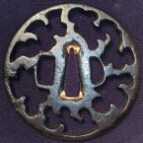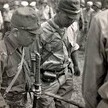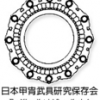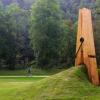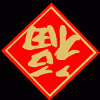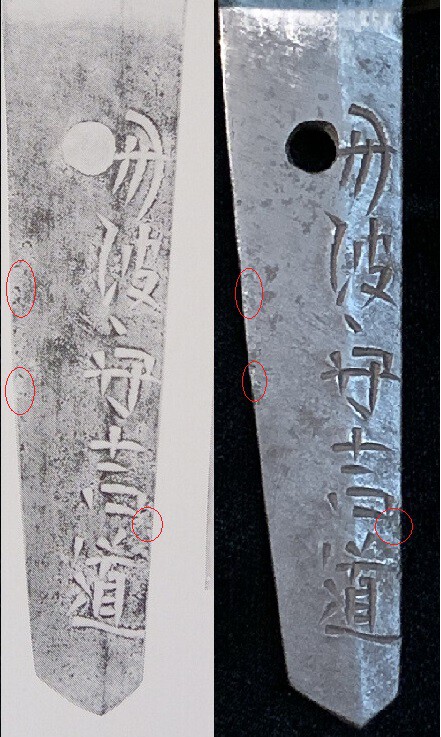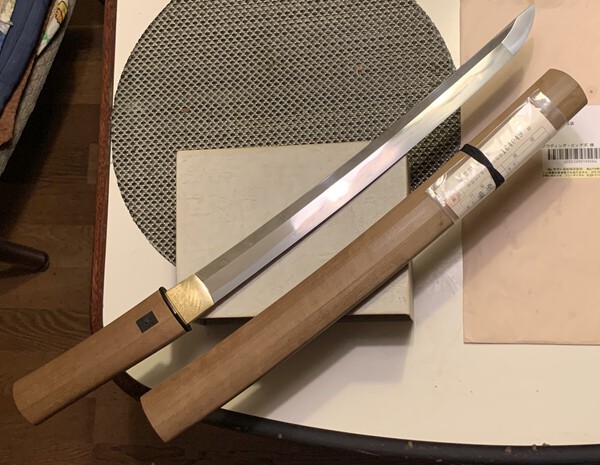Leaderboard
Popular Content
Showing content with the highest reputation on 07/27/2021 in all areas
-
3 points
-
Hello, I'm making some room in the collection so I thought I would offer this up for grabs. It comes with the sword registration from Japan. Saya is signed Ikkanshi Tadatsuna Saku. Very nice crystallization shown in the hamon. There are a few very small forge marks but other than that the cutting edge is amazing and the tip is still needle point sharp. Please DM for more pics for serious inquires only. Nagasa: 50.3 cm. Sori: 1.1 cm. Moto-haba: 3.0 cm. Saki-haba: 2.4 cm. Moto-gasane: 0.6 cm. Saki-gasane: 0.5 cm. $2500 US shipped with tracking additional shipping if you live outside the US or Canada.2 points
-
Eric As George read “Mino ju Kaneyoshi saku” and this one is Matsubara Shozo Kaneyoshi. Born Taisho 10 (1921 Jan 20). He was a student of Watanabe Kanenaga and the younger brother of Nakata Kanehide. He later became a Naval swordsmith. Summary and examples in Naval Swordsmiths Part 2, in the NMB Downloads. With a Sho/sakura stamp is an early war Showato.2 points
-
Hi Arnold, You say you want to buy an original sword; if so, you need to buy only from a dealer you can trust 100% or you need to study first (and, shy of getting lucky, those are the only options you have). The fact that you are asking about such an obvious fake tells us you are a beginner. There is nothing wrong with that; we all have been there ourselves, but as a beginner you need either very good advise or a whole lot more knowledge than you currently possess. Otherwise you will run out of money quite quickly. Grey2 points
-
Item No. 85: the subject is possibly 近江八景 - Ōmi hakkei, i.e. Eight Views of Ōmi. According to tradition, Regent Konoe Masaie and his son Hisamichi, while visiting Ōmi province near Kyōto, wrote eight waka poems describing famous scenes around the western shore of Lake Biwa. BTW, item No. 84 was assigned as ko-Shōami by a kanteisho? I'd rather say Heianjō-zōgan...2 points
-
7. With the beams in I decided to start in on the lighting. I used Hampton Bay mini tracks for this project. Here is what it looked like as I was installing: 8. Lights - check! Time to install the J brackets for the sword shelves. Or in this case level: B-A-L-A-N-C-E...balance (Can you guess the movie?). 9. With the brackets in - it was then time to install the beams. I used 2x4x8 stained in Kona.2 points
-
2 points
-
Yesterday, 03 / 07 / 2021, an event was held in Birmingham, the real one not the US copy, where Nihonto enthusiasts from all over the UK met for the first time after so many months of virus enforced separation. Special thanks must go to Ian Chapman and Mike Hickson - Smith for all their hard work in initiating the event, sourcing a venue and finally bringing the plan to its successful fruition. Unfortunately covid restrictions imposed limits on the number of attendees that could be accommodated in the space, but nevertheless if gave those sword lovers who could attended a foretaste of happier and less restrictive times that undoubtedly lie ahead. On display were a wide selection of fine swords, blades, fittings and accessories, some of which were old friends, but so many were new to me. Sadly I was unable to remain for the continuing festivities, that revolved around an evening meal, and something I find unbelievable, more liquid nourishment, but my few hours of exposure to the items on display and perhaps more importantly the opportunity to meet up with old friends, reignited a passion that this dreadful era of isolation had blunted. One again my thanks to Mike and Ian and let us look forward to making events like this a permanent feature in the future. Ian Bottomley1 point
-
1 point
-
kanmuri-otoshi. Very similar to unokubi zukuri in that it tapers towards the mune...but it also has the area to the rear that is a short section like a shinogi zukuri with a groove.1 point
-
The name is Kondō Kiyoshi (近藤精), living at what looks like Seto-kō #3518, in Setozaki-mura. As I say, this city was rolled up into Imabari city, and so the old addresses don't exist anymore. But the location would be somewhere around here https://www.google.com/maps/place/日本、〒794-1404+愛媛県今治市上浦町瀬戸2198/@34.22584,133.0463853,17z/data=!3m1!4b1!4m13!1m7!3m6!1s0x355048b4fd728ec9:0xcdee38840ee8a22!2z5pel5pys44CB44CSNzk0LTE0MDQg5oSb5aqb55yM5LuK5rK75biC5LiK5rWm55S654Cs5oi4!3b1!8m2!3d34.2250669!4d133.0437752!3m4!1s0x35504f302809c823:0x3b4f4750bdd1ba15!8m2!3d34.2258356!4d133.0485741 point
-
Hi Jeff, Here is a care and cleaning brochure: https://nbthk-ab2.org/sword-characteristics/ scroll down to find it. We won't be able to tell much from pictures alone; the sword needs to be seen in hand by an honest person with knowledge. Where in the States do you live? Maybe there will be someone nearby. Best, Grey1 point
-
Yes, flatten out that tag and give us a good shot of it. I can make out part of an address in Ochi-gun, Setozaki-mura (a place in Ehime Prefecture). The rest of the tag will have the name of the original owner, and maybe pinpoint the address. Edit: I can pick out part of the name. 囗藤精 The 藤 character can be read either as tō or fuji. It depends on what the preceding character is. So that means the family name will be something like 左藤, 斎藤, 伊東 (Satō, Saitō, Itō) or something like that. Or, it could also be 山藤, 高藤, (Yamafuji, Takafuji). The first name is probably is Kiyoshi, but there are multiple possible readings for the 精 kanji when it is used as a name.1 point
-
The tag will be the details of the person who surrendered it. Sword is a civilian mounted one, and looks quite nice indeed. Give the blade some oil, and nothing abrasive. I think you have a nice looking sword there.1 point
-
Thank you so much, Maxime! I hadn’t seen it, and that was a great piece. I particularly liked seeing the live-in aspect of apprenticeship, the challenges there, and bond formed between student and sensei (not always built on positive reactions to each other).1 point
-
And #60 on page 9 has similarities to some Echizen ju Kinai pics I have, although none of my examples have the depression in the middle like yours does. But otherwise, thick, smooth plate with deeply incised or stamped floral and plant leaf motifs with some gold inlays for "show".1 point
-
Hard to say anything. Remove the tsuka (handle) and show us the naked sword. The upper part of the picture looks odd. It seems a little blue maybe from heat? But your pictures are not really telling anything. Only that it is a civillian sword with a surrender tag.1 point
-
Will do that Bruce. This will be my first restoration project and I'm leaving it to the experts. From what board members have stated, David McDonald has an excellent reputation in Tsuka restoration, so I'm confident he'll do a great job. He wants me to send it to him after the SF Token Kai (unfortunately, I am not able to attend or I would deliver it in person) - David will have a table at the event. He informed me that it could be a month or two before I get it back, but it's worth the wait. Attached is a photo of the sword's tsuka in it's current, unwrapped state - note the missing menuki. Fortunately, the tsuka (the magnolia wood) is solid, as is the same (one small cut to the same in middle of tsuka, but will be covered by ito), so the repair will cost less than it would if I needed a new tsuka fitted. This should be a straight-forward wrap job with menuki added.1 point
-
There is an old saying amount collectors "mumei is better than gimei" Of course, many gimei blades are great swords, but without the fake signature the blade would be even better.1 point
-
Kusunoki Masashige, the big example for the kamikaze pilots, and all who want to die for the emperor. i know the Minatogawa jinja owns an armor, attributed as his, but in fact made in the 16th century. I would be very happy with some good pictures of this armor.1 point
-
Of course the danger is that he was used as a figurehead by militarists up to WWII, so some people will surely be reluctant to nominate him for a Taiga Drama, I am guessing. Also there should probably be a famous and influential woman to round out the story and make it acceptable to a broader audience. The shrine.1 point
-
Be sure to bring us some photos when it's done. Before & after! It's a great feeling to hold one of these after they've been restored as much as possible. Something sad about a gunto with missing parts, or dilapidated condition.1 point
-
Looks like successful bidder actually paid 550,000 Yen.....around US $5K.....blows me away. Might hold ontk the 95's until Japan relaxes it's import laws a little 😉 Rob1 point
-
Not related to real estate at all, rather low numbers of registered examples that can be legally owned.1 point
-
And don't forget the articles on this forum, lots of good information to help spot fakes.1 point
-
im of the opinion there prices are a reflection of there high realestate prices ?? as a cost of buisness;s it must be past on???hmmm?1 point
-
For Arnold’s (and everyone’s) sake, instead of just saying “it’s an obvious fake, hit the books,” can we please list some things that helped you identify it as a fake? Not all, but here’s what I saw right away: 1. Kanji on the mei was too spread out, on both sides, funkily chiseled (if it even WAS chiseled), and not normally recognizable characters (katakana?) 2. Thought the erotic scene on the kozuka was very out of place, and the figures themselves were too crude. 3. Kogatana’s blade shape was odd; the sori looked almost fantasy-like with the carved-out area. 4. Rust on nakago was an odd color, too bright. 5. Loose/missing seppas 6. seemed like the habaki and blade were off-center through the tsuba There are others certainly, but I think it’s helpful to take an extra few seconds to point out the WHY instead of always pointing towards the books without further context.1 point
-
1 point
-
I do not think that GYO is a proper reading in this context. 1. He was not the Emperor but only one of the Imperial family. 2. "Gyoken'etsu" sounds unpleasant.1 point
-
1 point
-
1 point
-
this is Japanese based auction, so being a machine made blade there rare for them, compared to the west. hence the silly price. PS everyone knows my op on these, just though i would share1 point
-
And another Japanese language monograph courtesy of @k morita. Adachi Kenzō 安立・健三. Nihon Seikōjo to Zuisen Tanto-Sho ni tsuite 日本製鋼所と瑞泉鍛刀所について [About The Japan Steel Works and Zuisen Sword Forge]. KK Nippon Seikōjo Muroran Seisakujo ㈱日本製鋼所室蘭製作所, 1974. 81 pages. Symbol Context, Post #161 point
-
Below is the transcription, reading from right to left, of the book cover shown in Post #16. Any comments or corrections welcomed. Column 1: 講演資料 = kōan shiryō = lecture materials. Column 2: 昭和四十九年九月十四日 = 1974-09-14. Column 3: 第十回刀苑合同研究会 = Dai-jū-kai tōen gōdō kenkyūkai = ??????????. Column 4: 室蘭全国大会 = Muroran zenkoku taikai = Muroran National Convention. Column 5: 日本製鋼所と瑞泉鍛刀所について = Nihon Seikōjo to Zuisen Tanto-Sho ni tsuite = About The Japan Steel Works and Zuisen Sword Forge. Column 6: ㈱日本製鋼所室蘭製作所 = KK Nihon Seikōjo Muroran Seisakujo = The Muroran Factory of Japan Steel Works Co., Ltd. Column 7: 総務部長代理 安立・健三 = Sōmu buchō dairi Adachi Kenzō = Deputy Chief of General Affairs Department Adachi Kenzō.1 point
-
A little text about polishing from the Baur Museum in Geneva1 point
-
1 point
-
A bit hard to see for my old eyes but I think it is signed by Kaneyoshi. I think your tang is signed MiNo Ju KaneYoshi Saku (Resident of Mino, Kaneyoshi made (this)). there were two of this name that I am aware of - both working in Seki. Yoshida Kaneyoshi started as Seki smith 8 Oct 1939 Matsuhara (also Matsubara) Kaneyoshi started at seki 11 Nov 1941 Not sure which is yours...1 point
-
Larry, You mentioned that your interest is as a collector also. The gunto is worth collecting (possibly Iaido also), so I think Chris' comment about running away was concerning the price only. These gunto normally run in the $1,400-1,800 price range, so if the seller is willing to come down, and you still like the sword, go for it. But like Chris said, his price is double the market value.1 point
-
昭和十八年 - Showa 18th year (1943) 昭和十八年秋 - Showa 18th year, autumn 武久 - Takehisa1 point
-
Russ, its true there is a lot of nonsense on facebook, but at this link you will find the writings of a fully qualified togishi (sword polisher) Andrew Ickeringill: https://www.facebook.com/toukentogishi Andrew spent 6 long, hard years in Japan learning polishing from Sensei Takushi Sasaki who in turn was taught by the Living National Treasure polisher Nagayama Koukan, also author of the book mentioned above The Connoisseurs Guide. Go here for a good video Best regards, BaZZa aka Barry Thomas Melbourne, Australia1 point
-
Hello from Maryland USA! To each of you that share your info/knowledge ofNihonto and Japanese culture I say thank you in advance. My interest is high but I don’t have much experience in the subject so I’ll refrain from commenting. I’ve got a lot of reading on this message board but I’m totally looking forward to it. Hopefully no one finds my ignorance too irritating if I ask questions!!!1 point
-
Hi Larry this is a showa-to non traditional blade in a civillian Koshirae. My best guess it was used for iato or cutting around. $3000 is astronomical for this sword. Run away from this sword and spare your money.1 point
-
Anyone else new to Nihonto (live on the forum, or still lurking!): Thirty quid is a really good price for one of the "must have" new-starter books. I bought one just a few weeks ago and the best price I could get mine for was £38 plus postage. Even if you're not going to buy a blade but are interested in the discussions on NMB , its a really good reference book. Note 1: I have no connection with the seller, other than having just bought a couple of books off him. Note 2: I am feeling very smug and righteous, having actually provided some (possibly) helpful advice on NMB ............ small steps! Cheers, Jon1 point
-
Chris, Thanks for your interest. Indeed, these are "primitives". Most are utilitarian Japanese blades - carpenters knives and things like that were fitted out by local carvers up in Hokkaido. There are basically three (3!) types of blades. 1) belt knives - called MAKIRI - that every guy carried I bet. They have trade knive blades and were certainly tools, not weapons. Then there were "Wood knives" which were like machete for use in forestry. Some of those look like they may have laminated blades but they do NOT look like either Nippon-to or Japanese folk tools. Then there were "Swords" - these included either locally produced hirazukuri short swords (no hamon but locally produced engravings etc} OR recycled Japanese sword blades --- all of which look like tired and abused old beat up Nippon-to -- mounted in locally produced , carved wooded, mounts. Clearly, Japan was awash in old sword blades and many of them seem to have traveled up to the "primitive" communities in the north. I have seen "Ezo" fittings - IN BOOKS!.They are rare!. The pieces that are actually out there to be discovered are universally beat up old Japanese blades or no collectible value - except as "ethnographic art. It seems that folks up in Hokkaido - call'em Ainu - did make iron blades by the Edo period, but most of which there is to be discovered are late 19th to early 20th century tools build of Japanese hardware. Again, thanks for looking! Peter1 point
-
Item No. 80 - Iron tsuba with shibuichi and gold - 8.05 cm x 7.38 cm x 0.38 cm Subject of pine tree , stream and moon , made approx. ten years ago by Ford Hallam A strong , stately pine tree partially depicted with branches and needles . The plugs shaded to represent the moon , reflected in the calmly flowing water . Overall a contemplative piece , with a quiet , soothing feel that evokes a similar response from the viewer , especially when held in hand. This tsuba was the first entered into the annual NBSK competition to win gold for a non-Japanese maker.1 point
-
1 point
-
1 point
-
1 point
-
1 point
-
His name appears in the local history of his native place. According to the document below, his (real) personal name was Jinsaku (甚作). Ref. http://www15.ocn.ne.jp/~f-isa/kiji10.htm#11 point







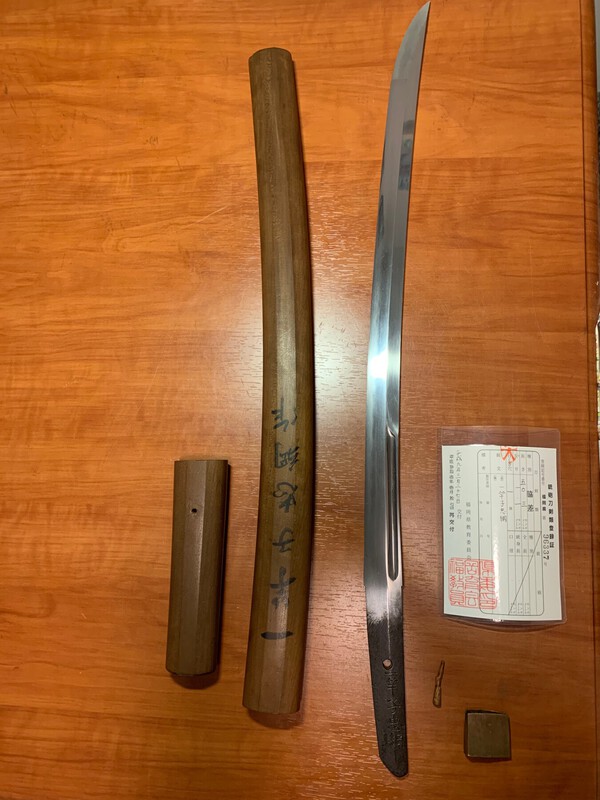


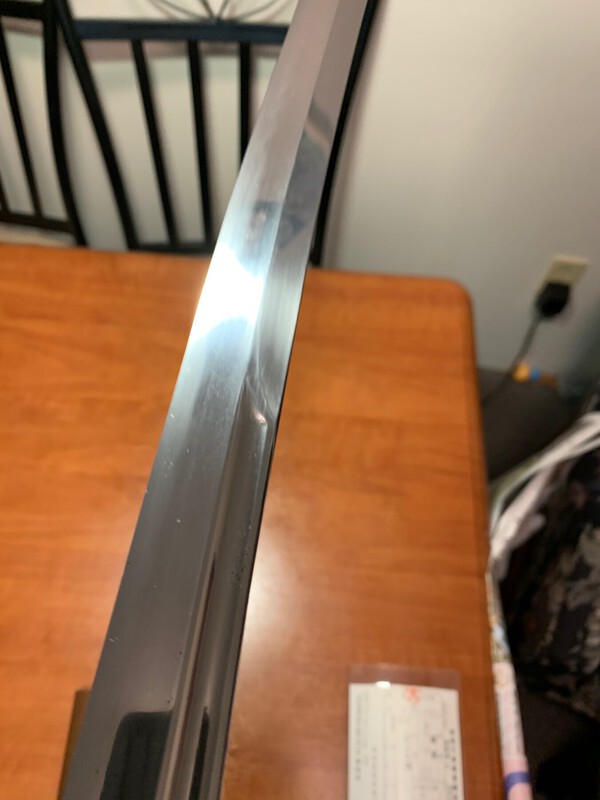


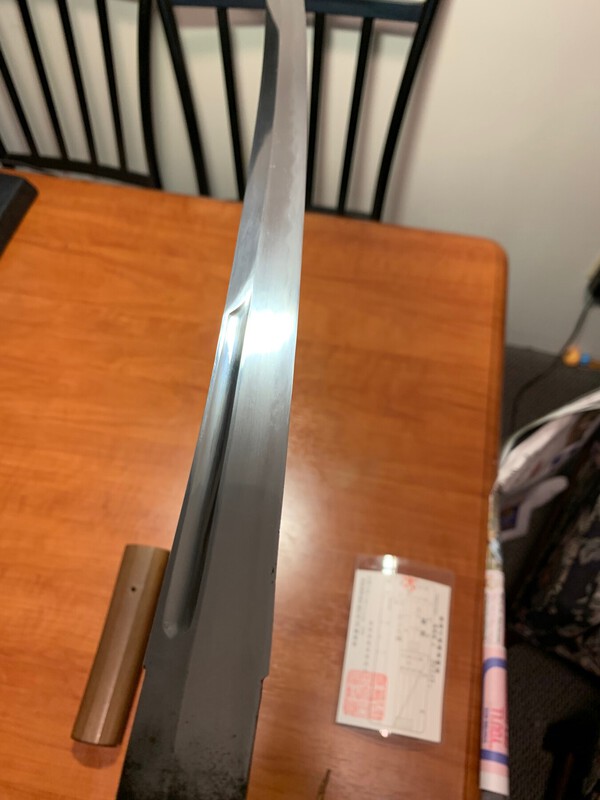

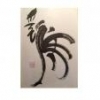

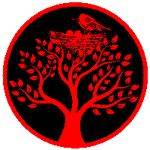




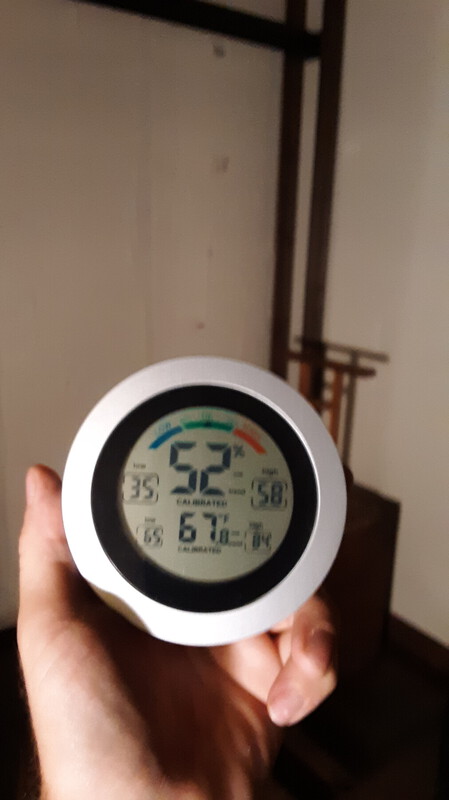



.thumb.jpg.bc10b59027a00aa142dce0349f3ba9e0.jpg)

